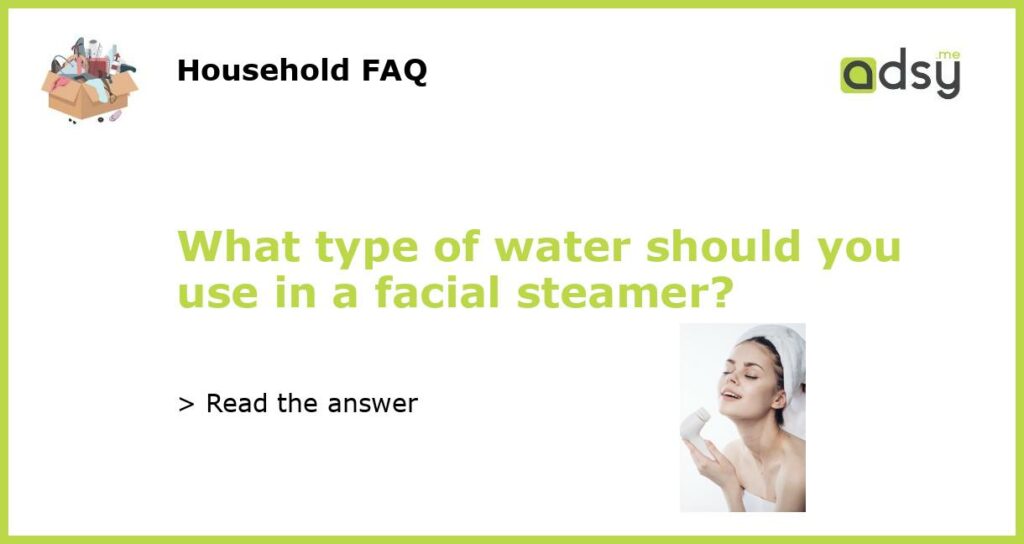Understanding facial steaming
Facial steaming is a common beauty ritual that involves using steam to open pores, detoxify the skin and enhance blood circulation. The process typically involves using a facial steamer, a device that generates steam and directs it towards the face. However, for best results, it’s important to use the right type of water.
Distilled water is ideal
When it comes to choosing the best water for your facial steamer, the safest and most effective choice is distilled water. Distilled water is free of minerals and impurities that can cause skin irritation or dryness. Using distilled water also helps prolong the life of your facial steamer by preventing mineral buildup and clogging of the unit.
Avoid using tap water
While tap water is readily available and seems like a good option, it’s not recommended for use in a facial steamer. Tap water contains minerals, chlorine, and other chemicals that can create deposits and buildup in your facial steamer. These deposits can ultimately reduce the efficiency of your unit and also pose health risks to your skin.
The dangers of using unfiltered water
Using unfiltered water for your facial steamer can be dangerous, especially if you live in an area with hard water. Hard water has a high mineral content and can be damaging to the skin, causing dryness, flakiness and irritation. The minerals in unfiltered water can also clog your facial steamer, leading to an increase in bacteria that can ultimately cause skin infections.
Bottled water is an alternative
If you don’t have access to distilled water, using bottled water is the next best option. Bottled water typically undergoes a distillation process which removes impurities and minerals that can harm your facial steamer and your skin. However, make sure you read the labels carefully and choose brands that offer pure water without any additives or chemicals that can cause allergic reactions on your skin.






